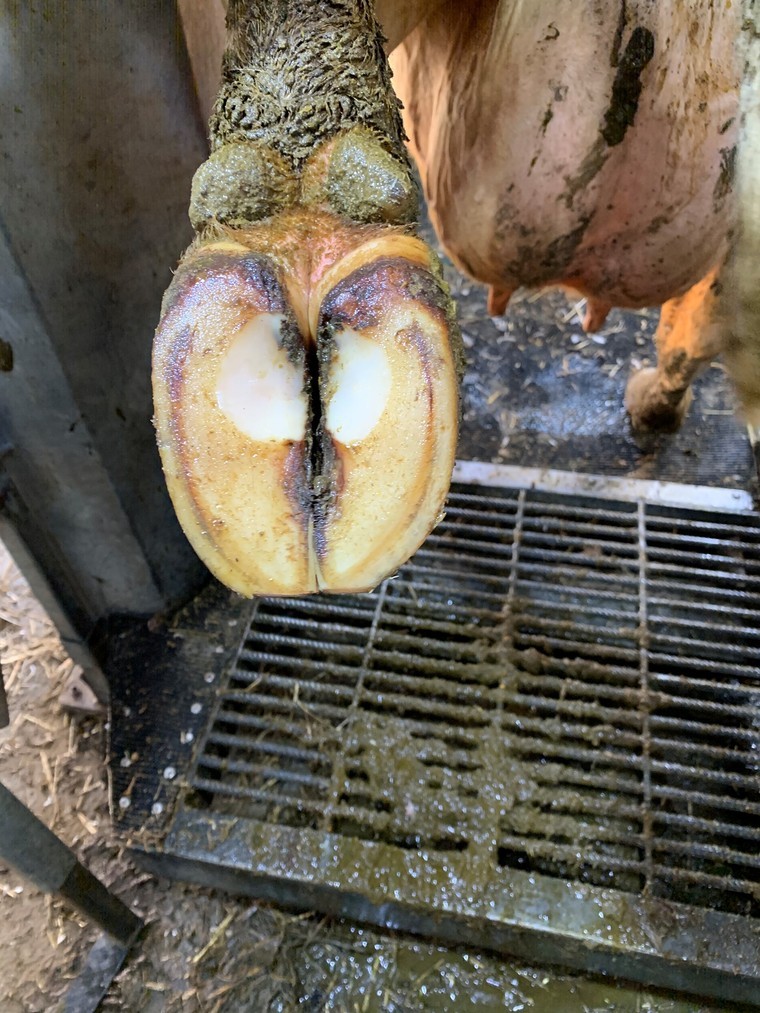Lameness is a significant issue on farms and is regarded as one of the three key issues facing every dairy farmer, along with mastitis and fertility. Because of the substantial health, welfare and productive consequences, it is also high on the agenda of processors, supermarkets and Red Tractor Assurance.
What are the effects of lameness on a cow?
- Yield can be reduced by between 400 and 600kg, depending on the type of lesion and its severity
- This yield depression can last up to nine months
- Higher yielding cows are at more risk of becoming lame, intensifying the effects
- Conception rate can be reduced by more than 25%
- There can be lifelong damage to the corium if a heifer gets an ulcer on her foot.
Identify and treat promptly – Mobility Scoring
Prompt and effective treatment of lame cows has been proved to reduce the prevalence and impact of lameness in the herd. A positive response will be guaranteed by identifying those cows that may benefit from treatment and treating them quickly. The best way to identify these cows is by regular mobility scoring.
The gold standard for mobility scoring is to do it every three weeks, but it will likely only happen on an ad hoc basis or often quarterly. Any cows scoring two or three need to have their feet lifted and checked within a few days of being identified. If treatment is delayed, there is a real risk that mobility score two cows will deteriorate. This can lead to irreversible changes in the foot that can consign that animal, often a freshly calved heifer, to a lifetime of lameness.
MOT Testing your cows’ feet – Preventative foot trimming
Lameness prevention is just as important, if not more so, than identifying and treating lame cows. Prevention focuses around preventative (i.e. routine) foot trimming and managing the risk factors for lameness
Preventative hoof trimming is where every cow in the herd receives routine foot inspections twice yearly. This will allow the feet to be trimmed if necessary. Ideally, this is done around dry-off (but not at that exact point) and at 80 to 100 days in milk, and would include heifers prior to their first lactation, to allow them to start their milking lives with good feet.
Dry-off inspection would be advised as the bare minimum if only routinely trimming once a year. These timings target the period of highest risk for the development of claw horn lesions, which is around the time of calving.
Some cows (for example, extensive grazing herds) may never need trimming, as hoof wear matches growth. However, regular foot inspections can still reduce lameness on these units.
What are the aims of preventative foot trimming?
The key to this is that feet are inspected and only trimmed if necessary. Hooves need to be the ideal shape so that they are balanced, better capable of supporting the cow’s weight and less likely to be affected by future problems.
The Dutch Five Step method is the standard recognised means of trimming cattle feet. A correctly trimmed and balanced hoof maintains excellent mobility, is cost effective and a valuable investment to preserve good foot health. It increases cow longevity and profitability and helps to maintain lower herd lameness prevalence.
Regular foot trimming allows the farmer to understand the causes of lameness within their unit. By recording all lesions, patterns are likely to be established. This allows the associated risk factors to be managed; from cow comfort and lying times to foot bathing protocols. This all helps to develop a lameness reduction plan.
Preventative herd health is a focus of the dairy industry and is fundamental to increasing farm profits and sustainability and improving the health status of the herd. As part of this, frequent mobility scoring and preventative foot trimming can lead to cows with significantly improved health and welfare and the risks and costs of lameness on farm can be reduced.
The classic saying works just as well with lameness as it does with lots of other factors on farm: prevention is better than cure.




